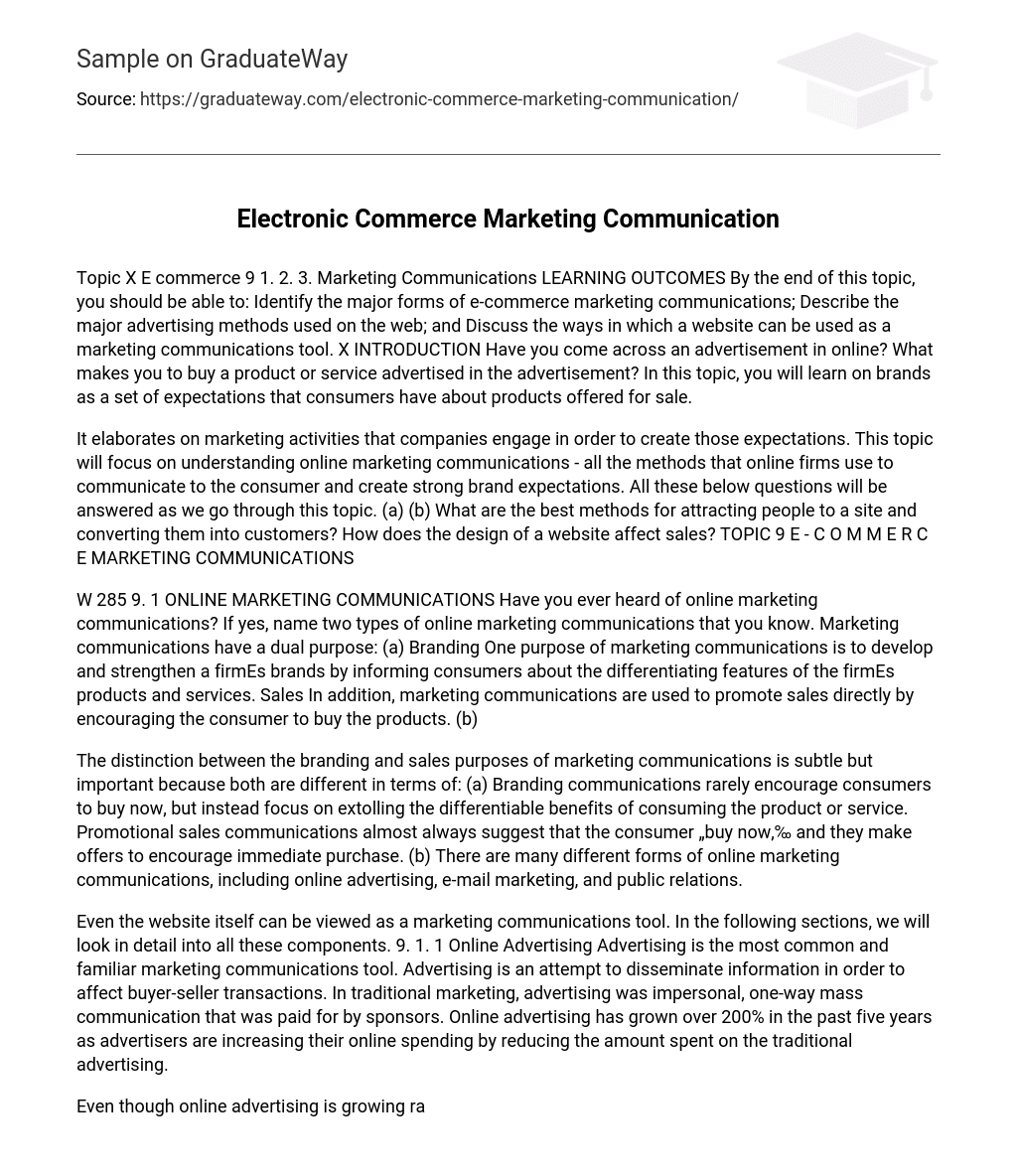Have you come across an advertisement in online? What makes you to buy a product or service advertised in the advertisement? In this topic, you will learn on brands as a set of expectations that consumers have about products offered for sale. It elaborates on marketing activities that companies engage in order to create those expectations. This topic will focus on understanding online marketing communications – all the methods that online firms use to communicate to the consumer and create strong brand expectations. All these below questions will be answered as we go through this topic.
Have you ever heard of online marketing communications? If yes, name two types of online marketing communications that you know. Marketing communications have a dual purpose: Branding One purpose of marketing communications is to develop and strengthen a firmEs brands by informing consumers about the differentiating features of the firmEs products and services. Sales In addition, marketing communications are used to promote sales directly by encouraging the consumer to buy the products.
The distinction between the branding and sales purposes of marketing communications is subtle but important because both are different in terms of: Branding communications rarely encourage consumers to buy now, but instead focus on extolling the differentiable benefits of consuming the product or service. Promotional sales communications almost always suggest that the consumer „buy now,‰ and they make offers to encourage immediate purchase. There are many different forms of online marketing communications, including online advertising, e-mail marketing, and public relations.
Advertising is the most common and familiar marketing communications tool. Advertising is an attempt to disseminate information in order to affect buyer-seller transactions. In traditional marketing, advertising was impersonal, one-way mass communication that was paid for by sponsors. Online advertising has grown over 200% in the past five years as advertisers are increasing their online spending by reducing the amount spent on the traditional advertising. Even though online advertising is growing rapidly, it still remains a small part of total advertising spending. It is expected to reach only 15% of total advertising in 2012 (source: eMarketer 2008).
Online advertising (defined as a paid message on a website, online service, or other interactive medium such as instant messaging) has both advantages and disadvantages when compared to advertising in traditional media, such as television, radio, and print (magazines and newspapers).
The biggest advantages of online advertising are the ability to target advertisements to narrow segments and track performance of advertisements in real time. Online advertisements also provide greater opportunities for two-way interactive communication between advertisers and the potential customer.
In addition, advertisements can be updated at any time with minimal cost. Web advertisements can effectively use the convergence of text, audio, graphics and animation. In addition, games, entertainment and promotions can easily be combined in online advertisements. Internet advertisements can be fresh and up-dated regularly. The web is a participatory tool. Many people can communicate with each other in the context of an online community.
Using wireless technology, web advertising can be location based; Internet advertisements can be sent to consumers wherever they are in a specific location. Richness of format Timeliness Participation Location-basis The following are the disadvantages of online advertising: Its cost versus its benefits; No adequate measurement to view its results; No clear standard or language of measurement; and Difficulty in measuring the size of market, therefore it is difficult to estimate rating, share, or reach and frequency.
Currently, the heaviest online advertisers are computer hardware and media companies, followed closely by financial services companies. The InternetEs ability to deliver information-rich messages lends itself well to high consideration, information-intensive products (i. e. , products that consumers typically research before purchasing). Packaged goods (which buyers typically purchase based on brand rather than research) are expected to have smaller shares of online advertising until significant broadband and alternative advertisement platforms are widespread enough to allow rich media advertising.





